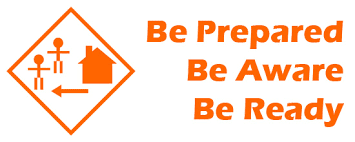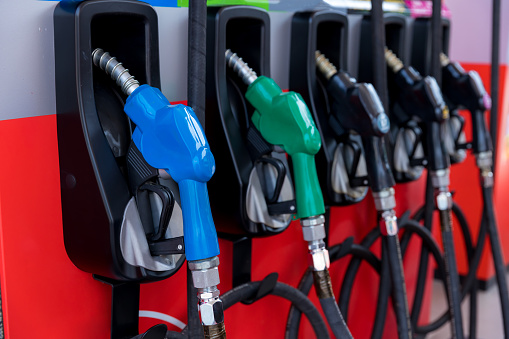Preparing for Uncertainty in Today's World Part 1 : Have an Evacuation Plan
Our 5th Sunday discussion toady, Brother Biggs reminded us of the uncertainty of things in the world and how fast our circumstances can change and the need to to have both spiritual and temporal preparedness on our minds and in our actions. Brother Rock spoke of four important aspects of spiritual preparedness but they apply equally to our temporal preparedness.
1. Be aware
2. Heed the warnings.
3. Act
4. Move quickly.
Bishop Kerns reminded us to have a plan and practice it. He encouraged us to prepare to be part of President Nelson's prophetic message in conference: "In the coming days, we will see the greatest manifestations of the Savior's power that the world has ever seen."
Recent headlines may have you pondering how prepared you would be in the event of a natural disaster. Most recently was hurricane Ian that hit Florida and left a path of destruction and flooding; however, closer to home was a 4.3 earthquake that hit Littlefield, Arizona and was felt by some in New Harmony. There was no damage from this earthquake but maybe it shook you up enough to prepare.
While it's recommended and helpful to know what risks you face where you live, there are some general preparedness tips that apply in all natural disaster events. We will present five tips and focus on the first one in this post.
1. Have an emergency plan and be prepared to evacuate if necessary.
- If you were advised to evacuate would you panic or jump into a well planned series of actions?
Arrange your evacuation ahead of time
Don't wait until the last minute to plan your evacuation.
- Identify where you can go in the event of an evacuation. Try to have more than one option: the home of a friend or family member in another town, a hotel or a shelter. Keep the phone numbers and addresses of these locations handy and not just on your cell phone in case you don't have service.
- Map out your primary routes and backup routes to your evacuation destinations in case roads are blocked or impassable. Try to have a physical map of the area available in case GPS satellite transmissions are down or your devices run out of power.
- Make the location specific.
- Ask an out-of-town friend or family member to act as a contact person for your family if service is down in your area.
- If you have young children practice meeting at you designated spot. For example if there was a house fire having a meeting place close but outside the home would ensure that everyone was out of the home and accounted for.
- If your children are in public school, you need a place to meet them or a place they could go until you can pick them up.
- If you are unable to pick up your children from school have another adult in the area that could pick them up and a password that your children would know so they would know it's safe to go with the adult.
- Have an alternate route home from your work in case your usual route is closed or unusable.
Many families choose to have a "go bag" ready with some of these critical items. Consider packing the following for an evacuation.
- Prescriptions and other medicines
- First aid kit
- 3 days supply of nonperishable food
- Bottled water
- Flashlight, battery-powered radio and extra batteries
- Clothing and bedding (sleeping bags, pillows)
- Special equipment for infants or elderly or disabled family members
- "Comfort items," such as special toys for children
- Computer hard drive and laptop
- Cherished photographs
- Pet food and other items for pets (litter boxes, leashes)
3. Create a home inventory
Making a home inventory and having it handy will be useful if you need to apply for disaster aid. It will also:
- Help ensure that you have purchased enough insurance to replace your personal possessions.
- Speed the insurance claims process, if necessary
- Substantiate any losses for income tax purposes.
4. Gather important documents
Keep the following important documents in a safe place that you can easily access and take with you in the event of an evacuation. And while for most of these you'll need an original, it's a good idea to make digital copies and keep them with you on a thumb drive, as well:
- Prescriptions
- Birth and marriage certificates
- Passports
- Drivers license or personal identification
- Social Security cards
- Insurance policies — homeowners, auto, life, and any others
- Recent tax returns
- Employment information
- Wills and deeds
- Stocks, bonds and other negotiable certificates
- Financial information such as bank, savings and retirement account numbers and recent tax returns
- Home inventory
Take the 10 Minute Evacuation Challenge
To ensure that you and your family are fully prepared for a sudden evacuation, do a real-time test. Give yourself just 10 minutes to get your family and belongings into the car and on the road to safety. By planning ahead and practicing, you should be able to gather your family members and pets, along with the most important items they will need, calmly and efficiently, with a minimum of stress and confusion.
Grandma Solomon had a small poster board with a list of items she would take in a hurry and another poster with items to gather if she had more time. While using poster board is a little outdated your phone or laptop is a good place to have this. Having a hard copy that is easy to find is also a great idea. Maybe Grandma Solomon had the right idea with her poster board. Wherever you keep the list, it allows you to be aware, heed the warning, act and move quickly.
Remember "When the time for performance comes; the time for preparation is past."





Comments
Post a Comment